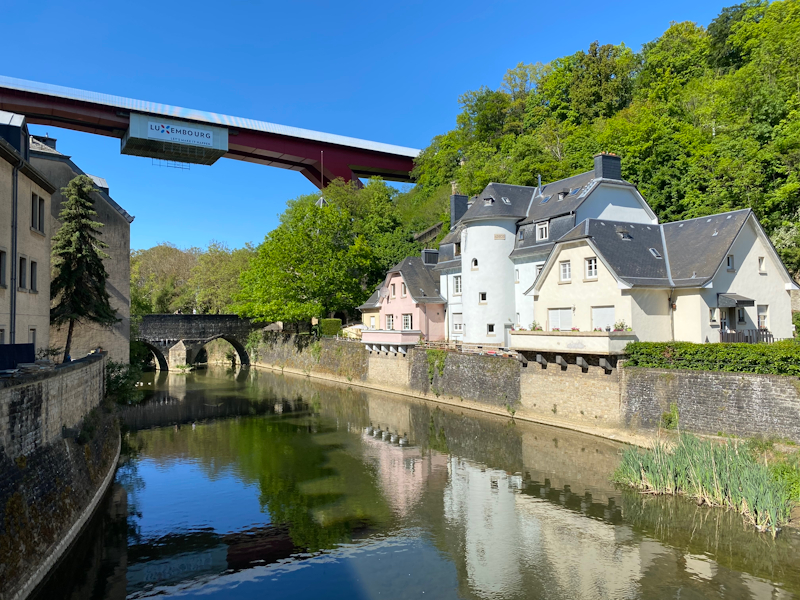Mobile Flagship Phone Camera Overview 2020 H1: Still Picture Battle
by Andrei Frumusanu on June 18, 2020 11:00 AM ESTUltra-Wide-Angles: Wide, or Macro?
Ultra-wide-angles have become extremely popular in recent years and are a must-have for any smartphone as it opens up new capturing experiences in scenarios that previously just weren’t possible. The key points here is the viewing angle that the camera module achieves as well as the resolution of the sensor. Processing is also very important of course and that’s probably where we’ll see most differences from the various vendors.
Also, maybe unbeknownst to many, ultra-wide-angle can also serve as excellent macro unit as long as the manufacturer actually employs an auto-focus mechanism on the optics of the module; unfortunately, a lot of ultra-wide-angles are fixed focus.

[ iPhone 11 Pro ] - [ iPhone SE ]
[ Galaxy S20U(S) ]
[ Galaxy S20+(E) ]
[ OnePlus 8 ] - [ OnePlus 8 Pro ]
[ V60 ] - [ Mi 10 Pro ]
[ P40 Pro ]
[ Reno3 Pro 5G ] - [ Reno3 Pro ]
[ X-T30 ]
The widest ultra-wides are employed by Apple and Samsung which both have around 120° field-of-view, corresponding to an about 13-14mm equivalent focal length, while the remaining phones range from 15-18mm.
A lot of the phones do adequate jobs in terms of exposure, but my two favourites are the S20+ and the OnePlus 8 Pro, both which achieve a better dynamic range and HDR handling of the shadows.
It’s weird to see the processing differences to the S20 Ultra here as it’s the same camera module but on a different chipset, the Exynos S20+ is better in the HDR.
In practice at the default resolutions the Mate 30 Pro and P40 Pro have the best sharpness but that’s just because it’s a bigger sensor that also has to cover a smaller 3:2 aspect ratio field of view. Huawei doesn’t make it easy to use the 40MP mode of these sensors so it’s a hassle to switch to them, it’s a practically unusable feature in every-day photography.
The OnePlus 8 Pro is the only other phone with a high resolution ultra-wide-angle. The 48MP picture certainly gives a lot more detail than the default 12MP, but it loses out a bit in dynamic range. The optics here really can’t keep up with the sensor as we see quite a lot of chromatic aberrations throughout the scene, but frankly that’s to be expected at this focal range and FoV.

[ iPhone 11 Pro ] - [ iPhone SE ] - [ Pixel 4 ]
[ Galaxy S20U(S) ] - [ Galaxy S20+(E) ]
[ OnePlus 8 ] - [ OnePlus 8 Pro ]
[ V60 ] - [ Mi 10 Pro ]
[ Mate 30 Pro ] - [ P40 Pro ]
[ Reno3 Pro 5G ] - [ Reno3 Pro ]
[ X-T30 ]
This next scene is a bit harder with dynamic range as we’re having bright sun-lit elements as well as dark elements in the shadows. It’s the OnePlus 8 Pro which provides the best exposure and natural look. In the 48MP mode I think the 8Pro actually does even bit better as it doesn’t flatten out the highlights as much on the building. The regular OP8 loses out in depth in the highlights and mid-tones and look flatter.
In this regard, the S20+ does better than the S20 Ultra and the iPhone 11 Pro as well, although the white building façade is blown out. The iPhone tries to compensate for this but ends up looking flat.
The V60 and Mi 10 Pro sensors here are also probably near their limits as they opted to blow out the white façade in order to keep more dynamic range in the rest of the image – a good choice as it’s still a good overall picture.
Huawei’s processing on the P40 Pro seem tamer than on the Mate 30 Pro so while it looks natural, it could have been a bit brighter in the exposure.
Just quickly switching over to the main high-resolution shots we again see the squiggles in the bridge barrier alongside rainbow Moiré in a lot of the phones. This time around it’s also slightly prevalent on the Mi 10 Pro and Reno3 Pro with Samsung sensors so it seems those sensors aren’t completely immune to it.

[ iPhone 11 Pro ] - [ iPhone SE ] - [ Pixel 4 ]
[ Galaxy S20U(S) ] - [ Galaxy S20+(E) ]
[ OnePlus 8 ] - [ OnePlus 8 Pro ]
[ V60 ] - [ Mi 10 Pro ]
[ Mate 30 Pro ] - [ P40 Pro ]
[ Reno3 Pro 5G ] - [ Reno3 Pro ] - [ X-T30 ]
Macro photography isn’t normally something we test out in our reviews but it’s something I just wanted to quickly go over in this piece. Macro means that you have a high reproduction factor of an object across the camera’s sensor; a real macro camera generally is considered that an object of a certain physical size actually covers the same size across the sensor. You can achieve this in two ways, you either have long focal range to zoom in onto the object, or you move the camera closer to the object in which case the focus mechanism needs to be able to actually focus that close.
Most smartphones today have either one or the other option with their cameras, usually with their telephoto module or the ultra-wide-angle. There are also some cheaper phones out there with dedicated macro module but generally they’re all useless in terms of quality.
These shots of these caterpillars aren’t really apples-to-apples comparisons but rather just a showcase of the best-effort in terms of getting as close as possible to the subjects.
The default shot here is actually from the Reno3 Pro. Both phones have auto-focus UWA modules so you’re really able to hold up the phone extremely close to the subject and still have it in focus. This gives a quite great result in terms of magnification.
A lot of the phones with 2x modules weren’t really able to focus as close so that’s why generally I skipped those pictures are they’re just not useable, and you’re better off trying to focus with the main module.
It’s the higher magnification telephoto modules which do the best and that includes the S20 Ultra, the P40 Pro and the Mi 10 Pro, although none of them are quite as sharp as the Reno3’s UWA at the focal plane.

[ iPhone 11 Pro ] - [ iPhone SE ] - [ Pixel 4 ]
[ Galaxy S20U(S) ] - [ Galaxy S20+(E) ]
[ OnePlus 8 ] - [ OnePlus 8 Pro ]
[ V60 ] - [ Mi 10 Pro ]
[ Mate 30 Pro ] - [ P40 Pro ]
[ Reno3 Pro 5G ] - [ Reno3 Pro ] - [ X-T30 ]
Sometimes you can’t actually get as close to the subject. Although the Reno3 phones have excellent macro shots of the centre of the flower I actually have to get as close to it that it bends one of the petals, which just doesn’t look as good for the shot.
The iPhone’s 2x telephoto actually does a real good job here in getting a good composition. The other phones have to sit back a bit further to focus properly. Oddly enough I got better shots with the regular OnePlus 8 rather than the 8 Pro here.
The S20 Ultra appears to get great magnification at the 4x zoom level but under closer inspection this is actually misleading as the phone actually took this with the main camera rather than the telephoto module, resulting in a blurry magnified shot.
The P40 Pro has the best real magnification amongst all the phones. I guess the narrow aperture of this module also helps it not have a quite as thin focal plane, I had to stop down to f/14 on the Fuji to get something that was similar.
Overall Ultra-Wide-Angle
In general, the first step to having a good ultra-wide-angle is actually having one, so the Pixel 4 eliminates itself from the competition here. The second step is considering the field of view of the UWA. Apple and Samsung have the widest views amongst all other vendors out there and this regard I do find them to be the most “fun” with their cameras.
Quality-wise, things vary quite a bit depending on what the processing ends up deciding to do. I found the S20 phones probably the most consistent on what they’re doing and they handle dynamic range the best in terms of the different scenarios whereas some of the other phones might end up producing flatter images, even when sometimes they aren’t quite as sharp. The OnePlus 8 Pro’s camera certainly is the sharpest amongst the UWA’s, and sometimes it even produces the best exposures, but it’s far less consistent.
LG, Xiaomi’s UWA’s are a bit hit and miss. They can be excellent, but sometimes the exposures and tones are more off than others.
Huawei’s modules are also technically great, but their reduced field-of-view take away a bit of the experience of an ultra-wide. In general, you can’t go too wrong with either Apple, Samsung or the OnePlus 8 Pro in terms of fun ultra-wide photography.










130 Comments
View All Comments
Tams80 - Saturday, June 20, 2020 - link
You can buy oleophobic liquids to put on your phone and they do work quite well. I'm not sure if they are as good as the factory-applied coatings though.And yes, you should still be careful with alcohol wipes. An article on this would be very interesting (perhaps even going into the science of it?)
Psyside - Saturday, June 20, 2020 - link
Great to know they are cleaned! thanks!bigi - Friday, June 19, 2020 - link
Excellent idea to finally reference phone cameras to something that takes proper pictures. Now, the X-T30 is truly excellent and modern camera. Because physics, no phone will match it unless same size sensor is used - more or less. As an owner original Canon 1D from 2001 with 4 Mega Pixel sensor, I can tell you that no phone can match it at any level still. People have no clue and marketing does the rest.eastcoast_pete - Friday, June 19, 2020 - link
That's exactly why having a "gold standard" in any comparison puts the achievements or let-downs in perspective. I am, however, still amazed just how good the pictures and videos by many of today's smartphones already are.s.yu - Friday, June 19, 2020 - link
I see the issue with the nomenclature here...it's not "nonabayer" that's the exception here, it's "quadbayer"...Sony should have called it "quadrabayer".Psyside - Saturday, June 20, 2020 - link
Oh there you are, i was waiting for you, now lets see how bad is Samsung 64MP during the day,https://screenshotcomparison.com/comparison/3687 - cropped at same level.
Psyside - Saturday, June 20, 2020 - link
And also please tell me which one is better from this 2,https://screenshotcomparison.com/comparison/3690
xGeoThumbs - Saturday, June 20, 2020 - link
I love these in depth comparisons, especially because you focus on true to life shots with a reference camera as a base for comparison.I do however think that the Pixel 4 can produce better results in daytime if you use Night Sight. Detail retention and sometimes the white balance will improve a lot.
fmcjw - Saturday, June 20, 2020 - link
If Anand did this article he would've used comparison tables for sensors/lenses/SoC DSP feature sets with OS version differences (rather than a simplistic, click it yourself and here's what I think about each phone format) and discussed/surmised the DSP workflows at play, why it made a particular camera perform better. Apple marketing hinted at the processes A13 included, and should've been at least mentioned in the previous iPhone 8/iPhone SE comparison. Similarly, GCam's processes can be compared.Anand's style is also to eliminate the SoC variable in the S20+/S20U, because he would've done a Exynos vs Snapdragon explainer/backgrounder comparison before he set out to test individual product design variations. A more strategic reviewer will sort this out rather present it as a "I'm not sure if" statement in the article, then skip to the battery of apples and oranges comparisons. I guess that's why Anand is hired by Apple then.
Barring any surprises, the video quality comparison should nicely correlate with pixel sizes. Still hope for Andrei to live up to his Anandtech creds by discussing microlens/binning advantages and tradeoffs over monolithic pixels, and video DSP designs. I suspect Apple has a leg up since their videos exhibit less jitter (frame rate drifting) and tell-tale signs of high frame-rate noise reduction.
Andrei Frumusanu - Saturday, June 20, 2020 - link
> If Anand did this articleBefore we repeat another rose-coloured glassed discussion of what Anand did or didn't do I would kindly remind what the last review of his 7 years ago contained in terms of camera evaluation:
https://www.anandtech.com/show/7335/the-iphone-5s-...
I would generally suggest reading the whole thing and contrasting that to either the iPhone 11 or S20 reviews.
> and discussed/surmised the DSP workflows at play, why it made a particular camera perform better.
I'm not qualified to talk about such things and neither would Anand have been. In fact, *nobody* is qualified to talk about these specifics, except the very engineers who designed the camera pipelines - each different for each vendor. Talking about Apple's high-level processes is pointless if we cannot put it into context of what other vendors are doing.
Similarly SoC DSP features sets as well as OS' are completely irrelevant to the discussion because no vendor actually discloses which features are being used and which aren't. It's a context-less presentation of incomplete information - I prefer to simply focus on the end result because that is what matters.
> Anand's style is also to eliminate the SoC variable in the S20+/S20U
I'm not sure what your argument and goal is here. I've done this and we covered this extensively in the S20 review and camera evaluations: https://www.anandtech.com/show/15603/the-samsung-g...
It was pointless to repeat the discussion with the Exynos S20U here as the article is already bloated, and the comparison focuses on the different vendors and flagships. Again what matters in the end is that results *still* remain wildly different between the Samsung phones, the detailed analysis you could read the aforementioned review months ago.
> Still hope for Andrei to live up to his Anandtech creds by discussing microlens/binning advantages and tradeoffs over monolithic pixels, and video DSP designs.
We've discussed these things over dozens of articles and reviews over the last years, especially in the last 2 years where these sensors have become popular.
> I guess that's why Anand is hired by Apple then.
Apple sure dodged a bullet when they showed the same interest with me.
I'm sorry I don't live up to your high standards, I might suggest reading other reviewers who invest more time and effort than I did here. Otherwise comments like these are akin to simply taking the piss on the time & effort it takes to actually publish a piece like this.